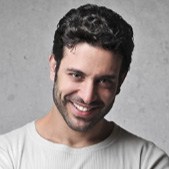Fractures of the Femur
The femur or thigh bone is the longest and strongest bone in the body, connecting the hip to the knee. A femur fracture is a break in the femur. The distal femur is the lower part of the thigh bone which flares out like an upside-down funnel and its lower end is covered by a smooth, slippery articular cartilage that protects and cushions the bone during movement. Fracture of the distal femur may involve the cartilaginous surface of the knee as well and result in arthritis.
Types
- Distal Femur Fracture: The distal femur is part of the femur bone that flares out like the mouth of the funnel. A distal femur (top part of knee joint) fracture is a break in thighbone that occurs just above your knee joint.
- Femoral Shaft Fracture: A femoral shaft fracture is a break that occurs anywhere along the femoral shaft, long, straight part of the femur.
- Proximal Femur Fracture: A hip fractureor proximal femur fracture is a break in the proximal end of the thigh bone near the hip.
Causes
Femur fractures may be caused by high energy injuries such as a fall from height or a motor vehicle accident. Patients with osteoporosis, bone tumor or infections, or a history of knee replacement are more prone to femur fractures. In the elderly, even a simple fall from a standing position may result in a fracture as the bones tend to become weak and fragile with advancing age.
Symptoms
Sudden, severe pain along with swelling and bruising are the predominant symptoms of femur fracture. The site is tender to touch with a visible physical deformity and shortening of the leg.
Diagnosis
The diagnosis of femur fracture is based on the patient’s medical history including history of any previous injuries, complete physical examination and imaging studies. The physician will evaluate the soft tissue around the joint to identify any signs of nerve or blood vessel injury. Multiple X-rays and other imaging studies such as CT and MRI scans may be used to identify the location and severity of the fracture.
Treatment
The management of the fracture is based on the severity of the fracture, medical condition of the patient and the patient’s lifestyle.
Non-surgical Treatment
Non-surgical treatment comprises of immobilizing the fractured site with the help of casts or braces to prevent weight bearing and to help the healing process. X-rays are taken at regular intervals to assess the healing process. Weight bearing and movement are initiated gradually, depending on the nature of the injury and the condition of the patient.
Surgical Treatment
Surgical treatment is considered to realign the fractured bone. The use of advanced technology and special materials has improved the surgical outcome even in older patients. External or internal fixation or a knee replacement may be required depending on the extent of the fracture. Timing of the surgery is an important factor in improving the surgical outcome.
Timing of Surgery
In most cases, the surgery is delayed for a few days to develop an effective treatment plan and for preparation of the patient. With most distal femur fractures the surgery can be delayed unless the fracture is open to the environment.
External Fixator
An external fixator is used when the surrounding soft tissue is severely damaged, as the use of plates and screws may be harmful. The external fixator maintains the alignment of the bone till surgery.
Once the patient is prepared for surgery, the surgeon removes the external fixator and places internal fixation devices into the bone during surgery.
Internal Fixator
The internal fixation may be performed using intramedullary nailing or plates and screws. In intramedullary nailing a metal rod is inserted into the marrow canal of the femur to keep the fractured fragment in position. In the plate and screw method the bone fragments are realigned and held together with screws and plates, attached to the outer surface of the bone. If the fracture is of the comminuted type or the bone has broken into many pieces, plates or rods may be used at the ends of the fracture without disturbing the smaller pieces. The plate or rod will maintain the shape or strength of the bone till it heals. In elderly patients and those with poor bone quality, bone grafting may be used to improve the healing. Knee replacement may also be considered in complicated fractures or those with poor bone quality.
Knee Replacement
Artificial implants may be used to replace the fractured segments of the bone and joint.
Rehabilitation
Rehabilitation of the femur fracture depends upon several factors such as age, general health of the patient and the type of fracture. As the femur fracture usually involves the weight bearing joint it may cause long term problems such as loss of knee motion or instability and long term arthritis. Hence a rehabilitation program is initiated along with the treatment comprising of instructions on weight bearing, knee movements, and the use of external devices such as braces.










